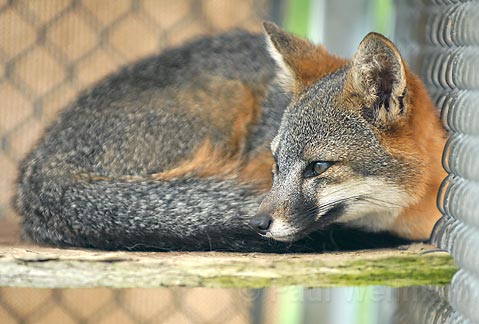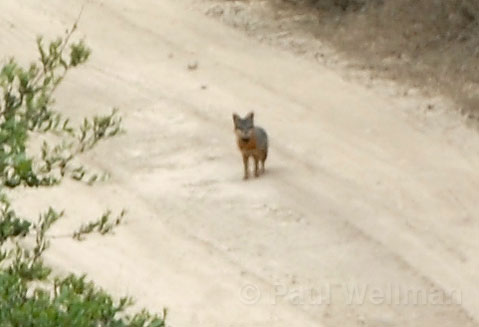Channel Island Fox Clears Major Hurdle
Back from the Edge of Extinction

In what some are calling “the fastest ever endangered species recovery,” Channel Islands National Park officials announced this week that captive breeding efforts for the island fox are no longer necessary. As recently as 1999, fewer than 100 island foxes were believed to be living on the northern Channel Islands, but now, thanks to nearly a decade of aggressive rehabilitation efforts, the animals, which occur nowhere else and are the second-smallest fox species in North America, have bounced back to such a degree that the final captive breeding pairs will be freed into the wilds of Santa Rosa Island early next month.
“It has gotten to the point now that the foxes in the wild actually are doing better than the foxes in captivity,” explained the National Park’s lead biologist, Tim Coonan, who added, in a surprised tone, “They have been breeding like nuts out there.”
The story of the foxes’ recovery is as much about one of the Channel Island’s most infamous interlopers, the golden eagle, as it is about the foxes’ mating and mortality rates. In the late 1990s, after use of the pesticide DDT in the mid 20th century had brought the bald eagle to the brink of extinction, its cousin, the golden eagle, moved into the bald eagle’s abandoned stomping grounds out at the Channel Islands. Bald eagles lived on fish, but the goldens preferred to dine on the islands’ non-native feral pigs and on the island foxes, which made for pitifully easy prey as they had never before had to think about aerial predators.

It was this sudden shuffle of the food chain, in the esteem of the park’s biologists, that nearly wiped out the four subspecies of island foxes native to Santa Rosa, San Miguel, Santa Cruz, and Santa Catalina islands.
By the time the first golden eagle nest was recorded on Santa Cruz Island in 1999, several years after the non-native birds of prey were first spotted hunting the islands, the fox count had diminished to just 15 individuals each on San Miguel and Santa Rosa islands, where several hundred had been counted a few years prior. The Santa Cruz Island population was believed to be less than 100.
(It should be noted that feral pigs remained quite prevalent on Santa Cruz Island, whereas they had been deliberately killed off on nearby Santa Rosa, leaving the goldens with only one main food source there: foxes.)
Looking to reverse the foxes’ disappearing act, the Park Service, working in concert with groups like the Nature Conservancy and the Institute for Wildlife Studies, carried out a perfect storm of rehabilitation efforts during the course of the next 10 years: eradicating the feral pigs on Santa Cruz, relocating golden eagles while reintroducing bald eagles, and operating captive fox breeding programs on all three islands. All told, the programs released 254 foxes into the wild.
Though the island fox was officially declared endangered by the U.S. Fish and Wildlife Department in 2004, the embattled mammal, as a result of these efforts, has actually been enjoying a population uptick of about 25 percent annually since the dire days of 1999.
Even better, while roughly 10 percent of island fox pups born in the wild survived in 1999, now more than 90 percent survive their first year. Add to that the fact that, once the final foxes are released in the first week of November, there will be more than 650 island foxes spread out across Santa Cruz, Santa Rosa, and San Miguel islands, and you have the bizarre but beautiful situation in which the species has effectively come back from the doorstep of extinction before Fish and Game even issued an official recovery plan. As Coonan put it, “We never thought it would happen this fast but, at least numerically, we probably have the numbers to support delisting now.”



